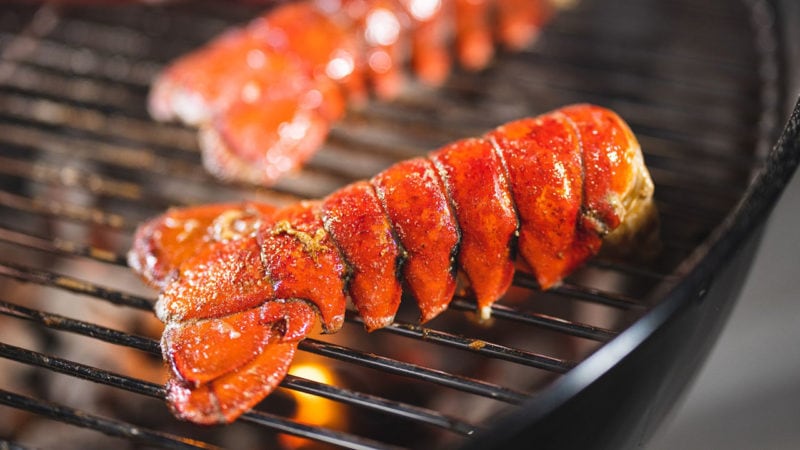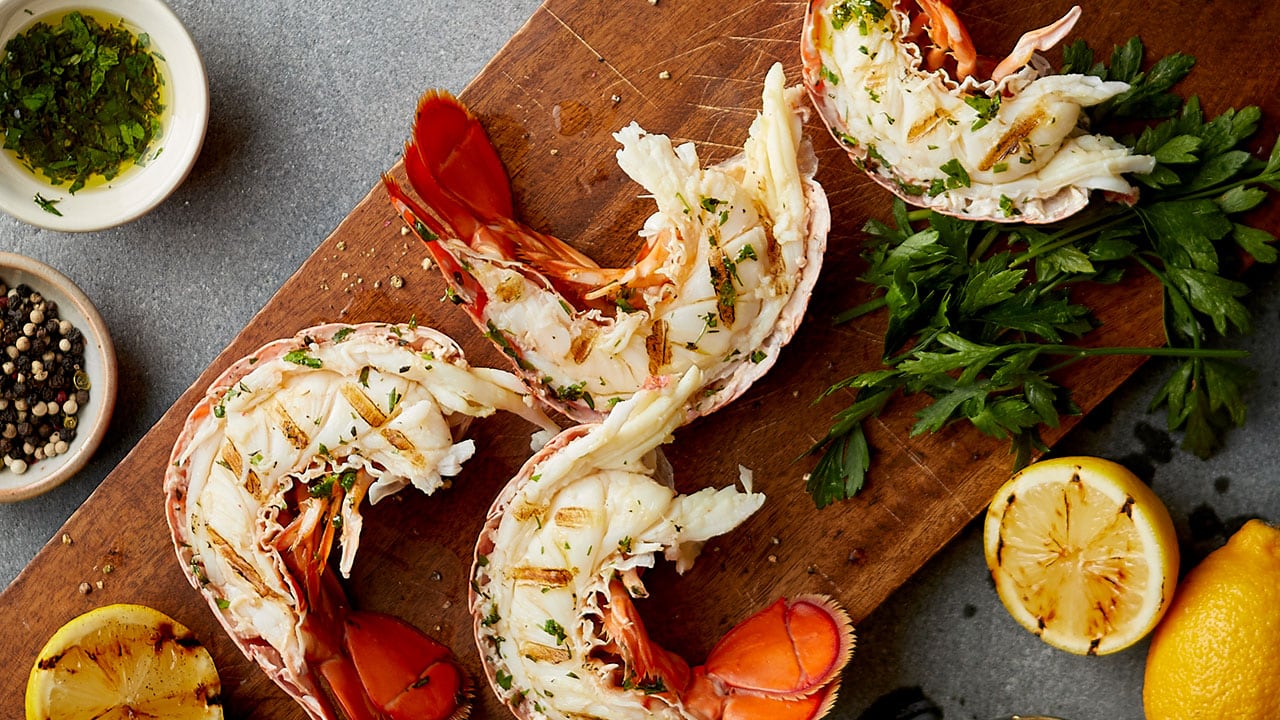Last Updated on August 23, 2023
Frozen lobster tails don’t necessarily have to be thawed before you cook them, however, the resulting lobster may not taste as good and will be a bit too firm. We recommend defrosting frozen lobster tails in the refrigerator overnight before cooking them to warm, buttery perfection.
It is actually quite easy to cook lobster tails once thawed. Here are some of our favorite tips for enjoying this New England coastal delicacy and a guide on the best way to cook frozen lobster tails once thawed.
Tips for Cooking Frozen Lobster Tails
1. Add a tasty sauce and seasoning.
Whether you’re cooking thawed lobster or pulling the lobster right out of Casco Bay, don’t skimp on the flavor. Lobster—which is rich, to begin with—tastes great with a simple lemon-butter sauce. You can also season with only salt, pepper, and paprika.
2. Shell and remove unwanted pieces.
Prior to cooking, you should de-vein the lobster tail.
On the surface of the meat, you may see a dark line running down the center. That discoloration is normal but doesn’t taste especially good. You can peel or scrape that out with a knife in a process called de-veining, similar to cleaning shrimp. If you see a green paste-like substance on the surface of the meat, this is normal! It’s called the tomalley. Just scrape it off as well.
Chef’s tip: Simmering the discarded shells with a little white wine and vegetable stock makes for an amazing lobster stock that’s perfect for making lobster bisque.
3. Cook to 145°F.
When cooked to perfection, the lobster meat will appear red on the outside, and white and firm on the inside. For best results, cook the lobster to an internal temperature of 145°F, as measured by a food thermometer. Lobster, unlike many other proteins, isn’t all that flexible when it comes to its perfect cooking temperature.
If overcooked, it can become chewy and rubbery. If undercooked, the lobster meat has a fleshy, gelatinous consistency, and runs the risk of carrying bacteria.
How to Cook Frozen Lobster Tails
Lobster is quite versatile cooked after thawing, but the key for any of these methods is making sure it reaches an internal temperature of 145°F. You can try lobster tails cooked directly from frozen but they may turn out a little less succulent than those cooked after thawing.
Don’t forget to warm some butter to dip or drown your cooked lobster tails.
Oven
When using the oven to cook your lobster tails, it’s a two-step process—steaming and roasting.
- Steam: Preheat your oven to 425°F. Place two thawed lobster tails, shell up, in a baking dish, and coat with your preferred seasonings or sauces. You’ll need some liquid, so add a bit of water if not using other liquid sauces. Cover the dish tightly with heavy-duty aluminum foil. Bake for 6-8 minutes.
- Roast: Uncover your lobster tails and roast for 4-6 minutes. Test with a meat thermometer, until it reaches 145°F. Note that some tails may cook faster or slower than others, depending on their size.
Broil
You can also broil lobster in the oven quite easily.
- Brush the lobster tails with butter and place on a baking pan, shell side up.
- Once the broiler has pre-heated, place the on the middle rack and broil for 6-8 minutes.
Grill
Another great way to cook lobster tails is on the grill. You can cook thawed lobster tails directly on the grill for a little added smokiness.
Chef’s Tip: Skewer the lobster tails with bamboo skewers so that they don’t curl while cooking and are easier to manage.
- After brushing with butter, place lobster tails shell side down for 2-3 minutes on the grill.
- Flip and cook for another 2-3 minutes. Enjoy with warmed butter.




